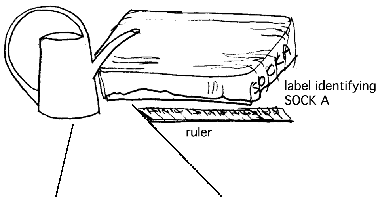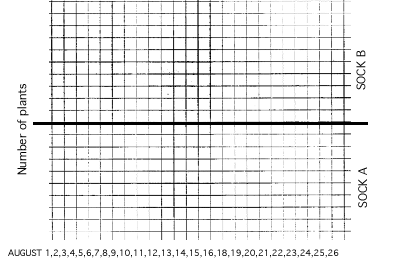![]()
![]()
![]()
![]()
|
SETTING UP YOUR EXPERIMENT 1. What do (did) you observe?
2. What are you asking about what you observe(d)?
3. Idea (hypothesis) you are testing: What is your idea about an answer for your question?
4. a. What variable will you change in your experiment? b. What will remain
constant in your experiment? 5. Make a sketch of the set-up for your experiment. Label all materials and state all conditions. List the materials you need.
Materials needed: |
||||
|
6. During the experiment (procedure):
7. Sketch a sample data table for your experiment.
8. Do the results of the experiment support your idea (hypothesis)? Did you answer the question? Conclusions:
Can you repeat this experiment at least 3X? Why or why not?
|
|
SETTING UP YOUR EXPERIMENT: SAMPLE COMPLETED FORM BASED ON “DIRTY A SOCK.” 1. What do (did) you observe?
2. What are you asking about what you observe(d)?
3. Idea (hypothesis) you are testing: What is your idea about an answer for your question?
4. a. What variable will you change in your experiment?
b. What will remain constant in your experiment?
5. Make a sketch of the set-up for your experiment. Label all materials and state all conditions. List the materials you need.
6. During the experiment (Procedure):
7. Sketch a sample data table for your experiment.
8. Do the results of the experiment support your idea (hypothesis)? Did you answer the question? Conclusions: Too soon to know.
9. Was this a FAIR TEST? (did
only one thing get tested at a time?) Why or why not?
10. Can you repeat this experiment at least 3X? Why or why not?
|

